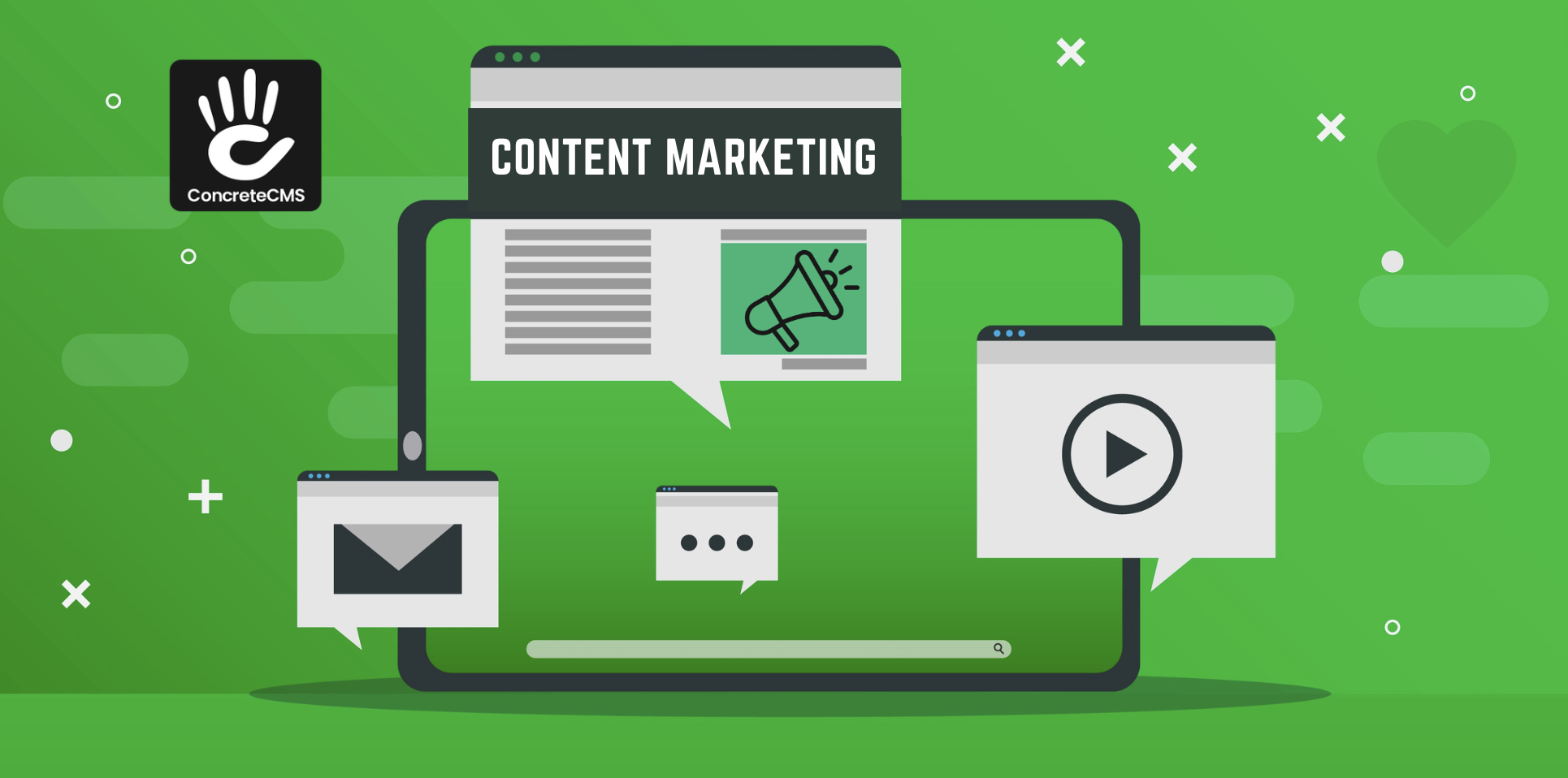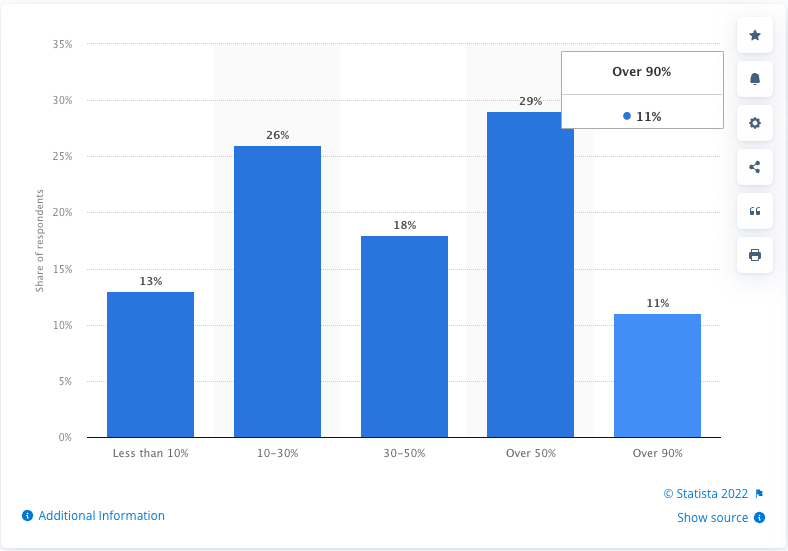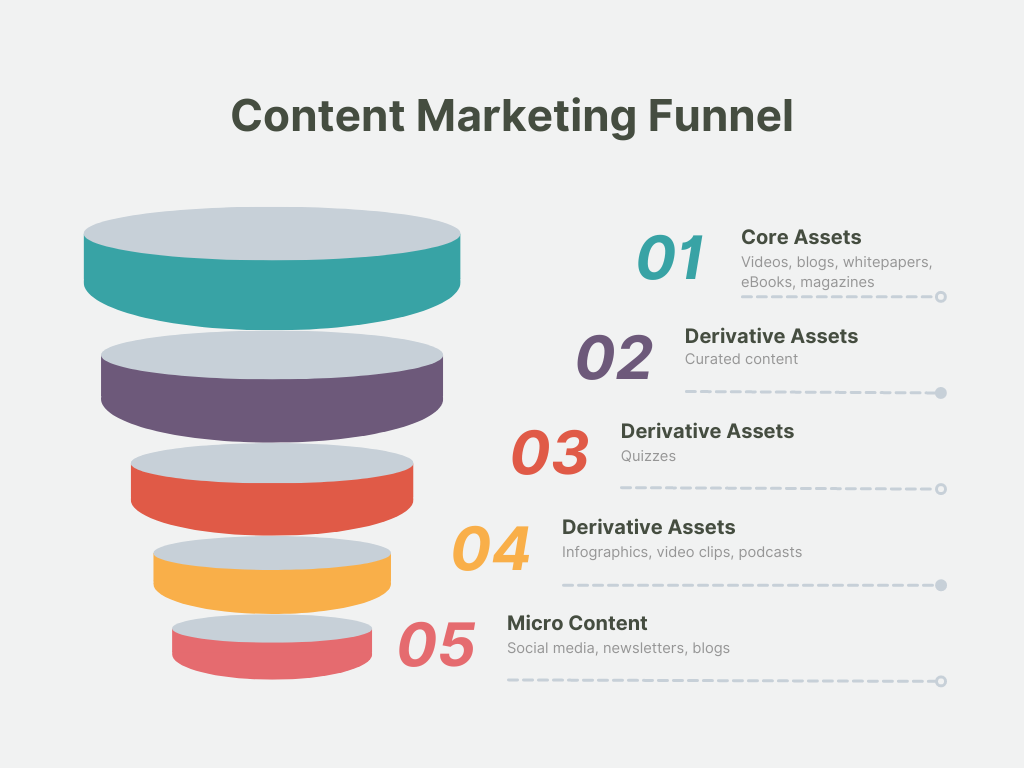Content marketing in essence is the art of content creation that is of real value to your existing customers and prospective audiences.

A Content Marketing Guide And a Gateway to Exceptional Customer Experience
Let’s consider this quote:
“Content marketing is all about telling a compelling story.” Joe Pulizzi, Content Marketing Institute
It’s true. Content marketing is partly about telling a compelling story. After all, content marketing must be relevant, timely, useful, and interesting. It’s important to create interesting content that engages your audience and encourages them to stick around to see what else you’ve got to offer. But it must also incorporate the other three verbs.
In this article, we’ll explore the gateway to exceptional customer experience through creating content for business growth.
What is the First Step of Content Marketing?
A 2021 survey of businesses revealed that 11% of respondents stated that over 90% of their organization’s customers expect personalized content.
That’s the first step.
Before creating a content marketing or SASS Content Marketing plan, you must consider the best way to create personalized content for your audience (this is the relevant bit). To do that, you need to know your audience:
- Who are they?
- Who/what influences them?
- How will you reach them?
- When is the best time to engage with them?
- How will they use your website?
- How will they navigate your content?
- What will they gain from your content?

Image Sourced from Statistica
Your business’s content marketing strategy must align with your audience’s wants and needs to be relevant to them. A tool like Google Analytics is great for establishing your audience demographics and the social media platforms they use frequently.
Another way to create the most relevant content is to garner customer feedback about your product or service. Both of these methods help you to build audience profiles. There are many advanced ways marketing can use data to understand customers, just look at some of the AI and ML options out there like, (you can use Lakehouse for Media & Entertainment.)
Why this is the gateway to exceptional customer experience:
You’ll understand what kind of content to create, how it’ll help them, and how/where you’ll deliver it.

YouTube Engaged-view conversions in Analytics reports
How do I Start Creating Content?
Steady on. Before you unleash your creativity, consider what you want to achieve from your content marketing initiatives. This could be:
- Growing your social community online.
- Driving more product or service sales/conversions.
- Communicating your brand identity.
- Encouraging repeat customers.
- Increasing customer retention.
- Reaching a new and niche customer base.
- Building your business’s reputation.
- Generating new leads.
- Increasing email signups.
Of course, it can be a combination of some of the above goals.
It’s essential to know what your business’s overall goals for content are as this makes your content more focused. Harness a tool like AI-powered CMS systems to take advantage of content intelligence data - this type of AI delivers valuable insights on customer past behavior and can predict how your customers will react to your content.
Why this is the gateway to exceptional customer experience:
Mindlessly creating content with no end goal is pointless. By acknowledging what you want your content to achieve, your focus is solely on your customer and how to achieve this goal.
Mapping the Customer Journey
Okay, no mention of creating content yet. We’ll get to that.
Laying the foundations of your content marketing strategy will reap rewards. This is because your result will be targeted to the people you care about the most - your customers. Now that you know who your prospective and actual customers are, you can begin to map their journey with your brand (otherwise known as the timely part of the plan).
Mapping the customer journey requires investigating each customer touchpoint to see how content can elevate their experience. Maybe they need a little extra reassurance at one stage as to why they should buy from your website - this can take the form of a small case study or a customer testimonial. They might still be in the awareness stage of their journey, in which instance use cases of your product in action can be helpful.
Why this is the gateway to exceptional customer experience:
Enhancing your customers’ experience makes them feel valued. The added bonus is that they’re more likely to buy something from you.
What does Content Marketing Include?
Your content should navigate your users from awareness to purchase, bolstering credibility and loyalty along the way. Let’s take a look at some different content formats to see how they deliver value to your customers:
Blogs
Blogging makes it into the top three content marketing tactics - with over 53% of businesses regularly creating blog posts. For SEO purposes, blogs are a solid bet. That said, as long as you thoroughly research your keywords and ensure your blogs are better than your competitors!
Long form content
Long form content can include case studies and whitepapers covering in-depth topics. Typically in excess of 1000 words, this type of content is great for thought leadership pieces of content and can demonstrate market authority in a competitive industry. Long form content works well to answer your audience’s questions - you can also repurpose this content for all sorts of other content pieces like shorter blog pieces, social media posts, and video scripts.
Social media
Using social media encourages awareness of your business online and is an informal way to reach your audience and show your company’s personal side. An effective content marketing tip for social media is to be consistent. There’s no value to ad hoc posts, so ensure that you weave social media into your content marketing strategy to reinforce your website content. Your business must have an established social media presence to be credible.
Video
If you go down the video content route, you’re not alone. 87% of businesses use video as a marketing tool. And video isn’t just for social media - include video content on your website to engage your audience and deliver useful information.
Choosing Content Formats

A content marketing funnel is a useful tool for deciding where to place each type of content to craft exceptional customer experiences.
Image Created by Writer
Content Formats
- Level 1 - Core Assets
- Level 2 to 4 - Derivative Assets
- Level 5 - Micro Content
Level 1 - Core Assets
The top of the funnel features content that demonstrates what your brand is all about. It’s your choice whether you gate this type of content - on the one hand, gating content generates valuable email addresses, but on the other, it may put prospective customers off. Consider gating longer form pieces of content like hosted VoIP guides, and making blogs and videos freely available.
In this section you’ll find:
- Blogs.
- Video.
- Whitepapers.
- eBooks.
- Magazines.
- Guides.
- Games.
- Microsites.
- Interactive tools.
Level 2 to 4 - Derivative Assets
Mid-level of the funnel is derivative assets that originate from your level one core content:
- Infographics.
- Video clips.
- Podcasts.
- Quizzes.
- Contributed content.
Level 5 - Micro Content
Micro content is usually content you can create quickly, such as social media posts. This level five content again comes from your core content and works to reinforce your business’s values and purpose. Micro content can include:
- Social media content.
- Newsletters.
- Blog comments.
- Curated content.
- Polls.
Putting it all Together
Begin your content marketing by focusing on a single campaign. Start with one core asset piece with numerous derivative assets and a lot of micro content to back it all up. Remember that your micro content pieces should be flexible so that you can quickly adapt them to respond to current market trends and social media activity.
If you’ve already got some content, conduct a content audit to visualize what you’ve got, and where. Log what you have, analyze whether it’s working, and find gaps in your existing content.
Plan and document your strategy in advance using automation tools and software to make life easier. Then, once your marketing campaign is live, monitor the activity it generates to see how effective it is. Consider your business’s overarching content goals to determine the effectiveness of generating new leads, converting more customers, or encouraging web form signups.
What Makes a Good Content Marketing Strategy?
A 2022 survey of US consumers showed that 84% of respondents are more likely to trust a brand that incorporates user-generated marketing content.
That’s not to say you must include user-generated content in your digital marketing strategy. But it’s an eye-opening statistic, and if this type of content is relevant to your audience, it might be something worth considering. Starbucks harnesses user-generated content with great success amongst their social media users - generating huge streams of revenue through this style of awareness campaign. User-generated content boosts customer engagement and delivers reassurance to your audience through the value of peer product use.
Summing up, a good content marketing strategy should include:
- Defined audience profiles - including research of industry trends, who your competitors’ audiences are, and who isn’t included as your audience.
- Marketing goals - what do you want to achieve with your content marketing, and how will you measure results? What resources do you need to reach your goals?
- Clear brand positioning - what is your brand’s unique value, and what problems does your product or service solve?
- Action plan - a list of your content marketing campaigns including the content formats you’ll focus on, and the distribution channels you plan to use.
Your business’s content marketing strategy is not dissimilar to a professional offering a consulting proposal template for intended work. It requires thorough research and thought, and always has the customer in mind for maximum effect.
Bio:
Grace Lau - Director of Growth Content, Dialpad
Grace Lau is the Director of Growth Content at Dialpad, an AI-powered best cloud PBX communication platform for better and easier team collaboration. She has over 10 years of experience in content writing and strategy. Currently, she is responsible for leading branded and editorial content strategies, partnering with SEO and Ops teams to build and nurture content. Grace Lau also published articles for domains such as Virtual Vocations and Solutions Review. Here is her LinkedIn.